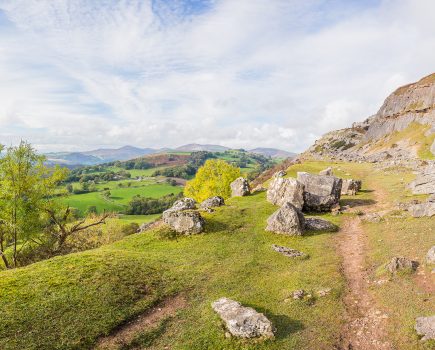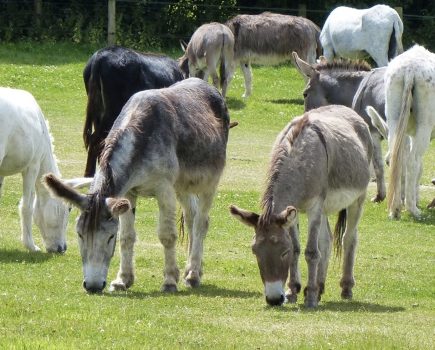Jules Moore shows you how
In my efforts to save money wherever I can and to make the best use of nature’s free resources, I embarked upon a new hobby last year. I have started making my own wine after being inspired by a recipe for strawberry wine and have not looked back since. Whilst I am no expert, I have had sufficient success that I thought I would share my experiences in the hope of persuading other smallholders to follow suit. There are many methods of making your own wine but the basic principles is that you add fruit or flowers (or even vegetables and herbs) to water and sugar and add yeast. Nature does the rest and the results are not only very tasty, but rather potent too! As is always the way with any rural skill, there are a great many alternative views on how to do things and what to use, so I have stuck to the method I used which has worked well on four out of five occasions (and the fifth one is being given a chance to mature!). So far, I am on my second year of making strawberry wine and have made blackberry, rhubarb, apple and Cyser (apple & honey). It is the first apple one which is currently undrinkable, but patience can bring its own reward with wine so I am ever hopeful. The others have all been very alcoholic and the earliest ones were very sweet, but I now add rather less sugar when I am topping up than I did before. They are more like a liqueur in many ways, though the blackberry was the most grape-like. Diluting them with fizzy water worked well. Blackberry Wine This recipe is a great one to start with as foraging for blackberries are free and so you will only need to buy very few ingredients and the equipment. Ingredients • 1.8kg (4lbs) blackberries • 1.2kg (2.5lbs) white sugar • 1 tsp pectolase (which stops the wine being cloudy) • A sachet of Burgundy wine yeast • 1 tsp yeast nutrient • Campden tablets Instructions When making wine, it is important to remember to sterilise all equipment, using Campden tablets (instructions on the packet). The mixture should be put in the jug so that you remember it is not just water and can be reused. Don’t forget to rinse out everything with boiled water afterwards to avoid tainting the wine. Wash the blackberries well and put them in the bucket. Crush them with a potato masher and add 5 pints of boiled water. Drop in a Campden tablet and stir well. The tablet ensures that there are no wild yeasts in the mix, as these can have an unpredictable effect. Cover and leave overnight. The next day, add the yeast, the nutrient and the pectolase to the mix and stir. Leave in a warm place – I stand my bucket on a thermostatically controlled seed tray. Leave overnight. The next day, sieve the juice off the fruit pulp (you can use the demijohn for this temporarily). Wash and sterilise the bucket and then add the sugar and the liquid back in, stirring until the sugar is dissolved. If you use the demijohn for the ‘first ferment’, it may overflow with the amount of bubbling going on. Cover and leave for about three days until the fermenting has subsided a bit. Keep it warm still and stir daily. Now you need to transfer the liquid to a demijohn using the siphon and leaving as much sediment in the bottom as possible. Fit the airlock, with a bit of sterilising solution in it. How long the next bit takes will depend on how warm the liquid is and how long the yeast lasts, but once you see a build up of sediment in the bottle of the demijohn, you need to rack the liquid off, clean out the demijohn and put the liquid back in again. You may have to do this more than once. Make up the gap between the top of the liquid and the neck of the demijohn as by now you will have lost some. Use cooled boiled water either on its own or sweetened with up to 170g (6oz) sugar per pint, depending on how your wine tastes. And no, I don’t believe you haven’t tasted it already! When it has stopped fermenting altogether, it is ready to bottle. If you are unsure if it has really stopped, you can use a hydrometer, but that is more advanced. If you put a cork in it, store it upright for a few days and see if the cork is being forced out. If it is not, you are ok. I did have one bottle of strawberry wine which must have got some wild yeast in it last year as it kept on fermenting, but the cork hung on in. When we opened it, we had strawberry ‘champagne’ – delicious! Basic equipment needed to start wine-making: • 1 gallon demijohn with bung & airlock – The airlock allows the carbon dioxide produced by the fermenting yeast to escape, but prevents wild yeasts from getting in. • Plastic container (approx 2 gallons) with a lid – This is where you put your fruit pulp and water to start with to extract the flavours. It is also used for the “First Ferment” when you first add the yeast, as it can be too energetic for the confined space of the demijohn, causing it to bubble over. • Six old wine bottles – in anticipation of the final product • Packet of corks – don’t use screwtops just in case you bottle it too soon and the fermentation continues. Better a sticky floor when the cork is pushed out than an exploded bottle. • Corker – gadget for pushing in corks. • A siphon – for getting the wine with the minimum of disturbance to the sediment. • A funnel – for getting liquids into the demijohn if you are not using the siphon. • A jug – for holding the sterilising liquid between uses. • Labels – homemade or pre-printed, otherwise you will be guessing, especially in green bottles! • Equipment can be bought secondhand on the internet or you can buy a beginners’ wine making set for about £35. There are a number of specialist homebrew companies who will sell you the yeasts etc by mail order.







